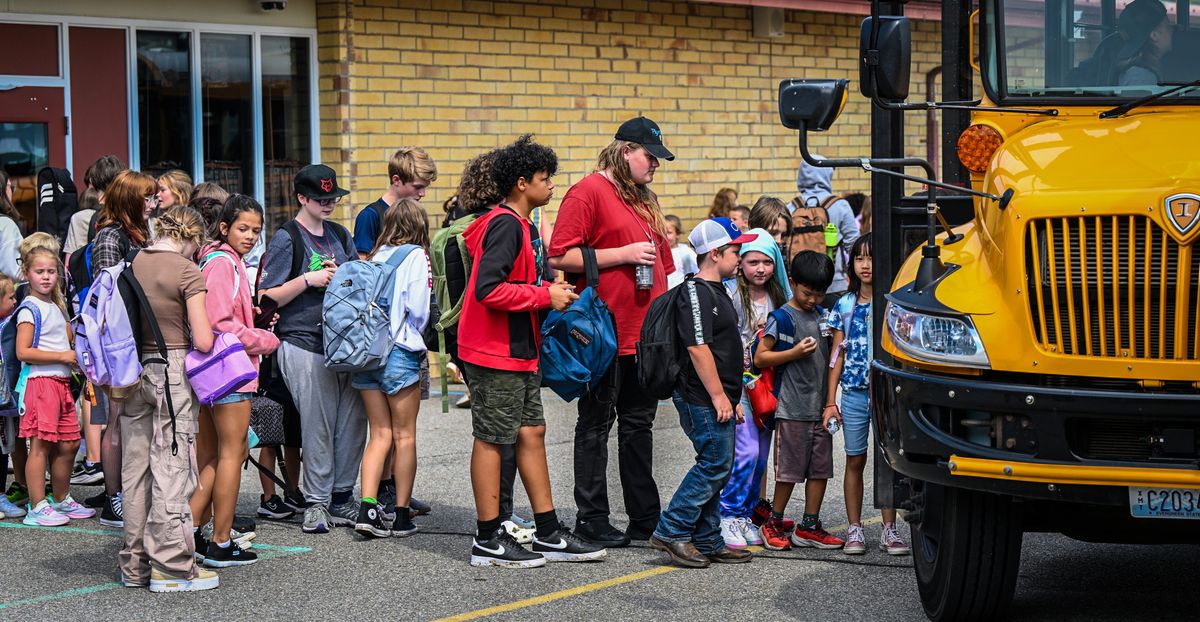Trading months of summer vacation for more breaks in the school year, East Valley school has a wait list for its ‘continuous curriculum’

While the rest of East Valley students were still crossing off the days until the first day of school at the end of August, the bell rang for pupils at the Continuous Curriculum School weeks earlier.
For 26 years, CCS has boasted an adjusted school calendar with a shorter summer and more frequent breaks sprinkled throughout the school year. The school also achieves higher test scores.
CCS follows state standards of 180 days of instruction, operating on a cycle of approximately six weeks of instruction and two-week breaks for students and staff, while abbreviating their summer break at six weeks. The school last year served 370 students from kindergarten to eighth grade.
Teachers like Jill Shillam, who was among the original six CCS teachers 26 years ago and hasn’t left since, don’t mourn their brief summer and relish the frequent breaks.
“If you think about working for a month and a half and you know you’re going to take a break, it rejuvenates you to go again and again and again,” Shillam said.
“I would never want to go back to three months of summer,” she said.
Other East Valley schools have schedules with about a day off every month on holidays, two days for Thanksgiving, weeklong breaks in February and April, and two weeks in December. Then, students and staff have from mid-June to late August for summer break. These months without instruction result in a significant learning slide in elementary-aged students, according to Chuck Stocker, a former East Valley superintendent who was at the helm when the district opened CCS.
“I heard for years from elementary teachers that summer break kills us with elementary kids because it takes us a full month to get them back into the stream of things,” Stocker said. “When we studied to start this program, one of the things that came up was to shorten the summer vacation to eliminate or narrow the lack of learning time for elementary students.”
The vision was realized, COVID-era learning loss notwithstanding, as Shillam said her third-graders need little review in subjects like reading and multiplication when they return from their six-week summer.
“They really haven’t missed a beat. I have a little catch-up to do with them, but not much,” she said. “They might as well have just left and come back the next day.”
The calendar as a learning remediation tool is reflected in the school’s state test scores. At CCS, 59% of students met state standards in English, 55% in math and 60% in science this spring. That’s comparable to district-wide, with 45% in English, 31% in math and 40% of students meeting standards in science, according to the data from the state Office of Superintendent of Public Instruction.
While their atypical calendar is the most glaring distinction between CCS and other East Valley schools, the boosted test scores could be due to myriad factors, according to those involved.
Notably, CCS is a choice school, where parents have to deliberately enroll their kid in the school, rather than send their child to the closest one in their district. Last school year, around 10% of CCS’s students were from out of district: 49 students, according to CCS Principal Steve Pointer. The school also has a wait list ten kids long.
Pointer and East Valley Superintendent Brian Talbott agree selecting the school your student attends indicates increased attention to your child’s education, correlating to student achievement and explaining the higher test scores.
“If you’re choosing, then you have perhaps a little more involvement, and there is a lot of parental involvement at this school,” Talbott said.
CCS has an active Parent, Teacher, Student Association that organizes functions, coordinates volunteers and reimburses teachers for some classroom expenses. PTSA activities largely center on student engagement and school improvement. Before school opened this year, volunteers from the association met and repainted the school’s blacktop. They were also involved in the construction of a new gaga ball court on the schoolyard.
Parent volunteers are also a frequent presence in CCS classrooms. Jacqueline Barnard, a CCS parent of 14 years who’s had five children attend the school, is treasurer of the PTSA and volunteers on a weekly basis. A Liberty Lake resident, she still plans to choice-in her youngest when she’s Kindergarten age.
“We’re sending our kids off to be with someone else for seven hours a day,” she said. “I want to feel really, really good about where they’re going and who they’re surrounded with.
“That feeling is easily achievable at CCS, because there are so many ways to be involved and be active,” she added.
Once teachers arrive at CCS, they usually don’t leave. Whether it’s the unusual calendar easing burnout, the parent collaboration or community feel, staff and students alike thrive at CCS, Pointer said. CCS’s 30 teachers have an average of almost 21 years of teaching under their belts, versus the nearly 16 years district-wide, according to OSPI.
“We have a strong culture of the same teachers who stay. I mean, I’ve been here 10 years,” Pointer said. “The staff who leave are the staff who retire. The general trend is, when you get here, you’re a lifer by choice.”